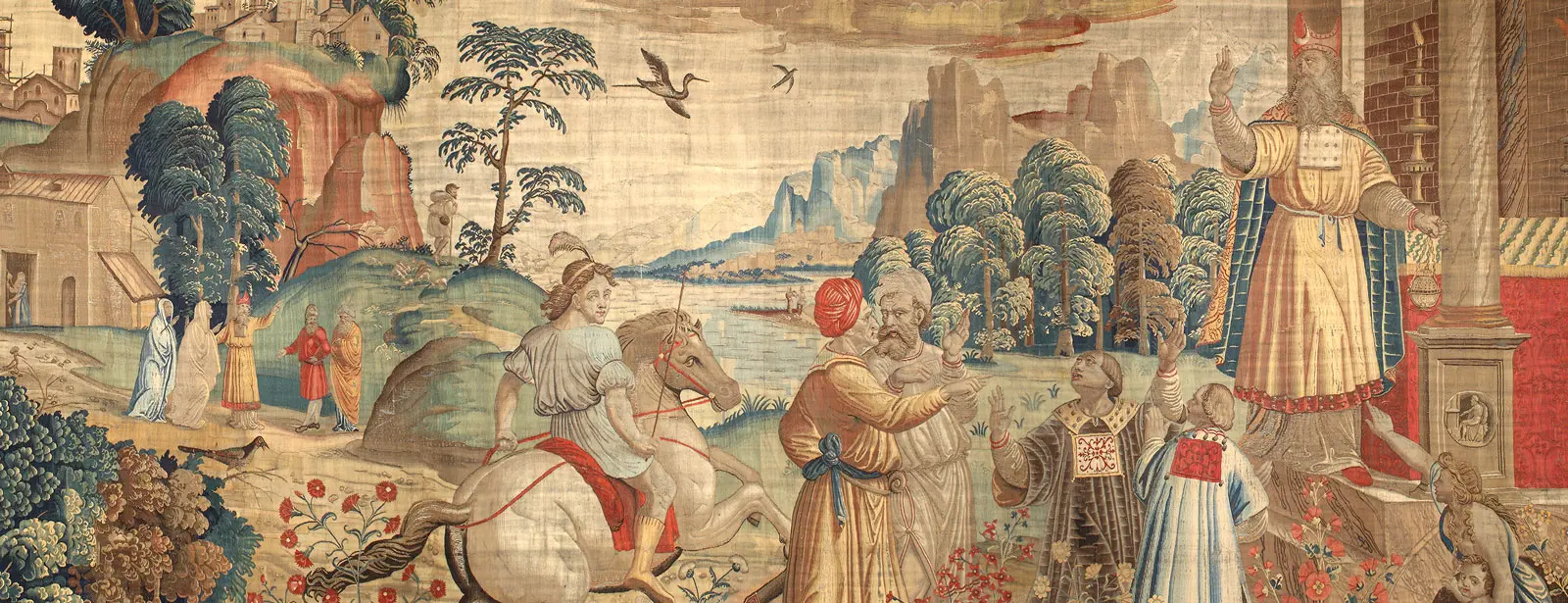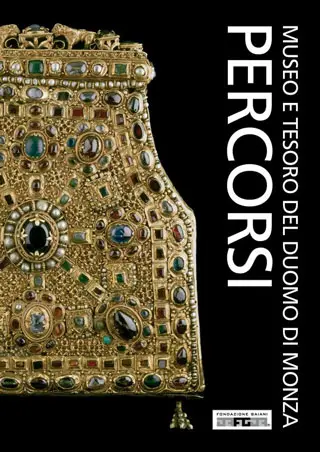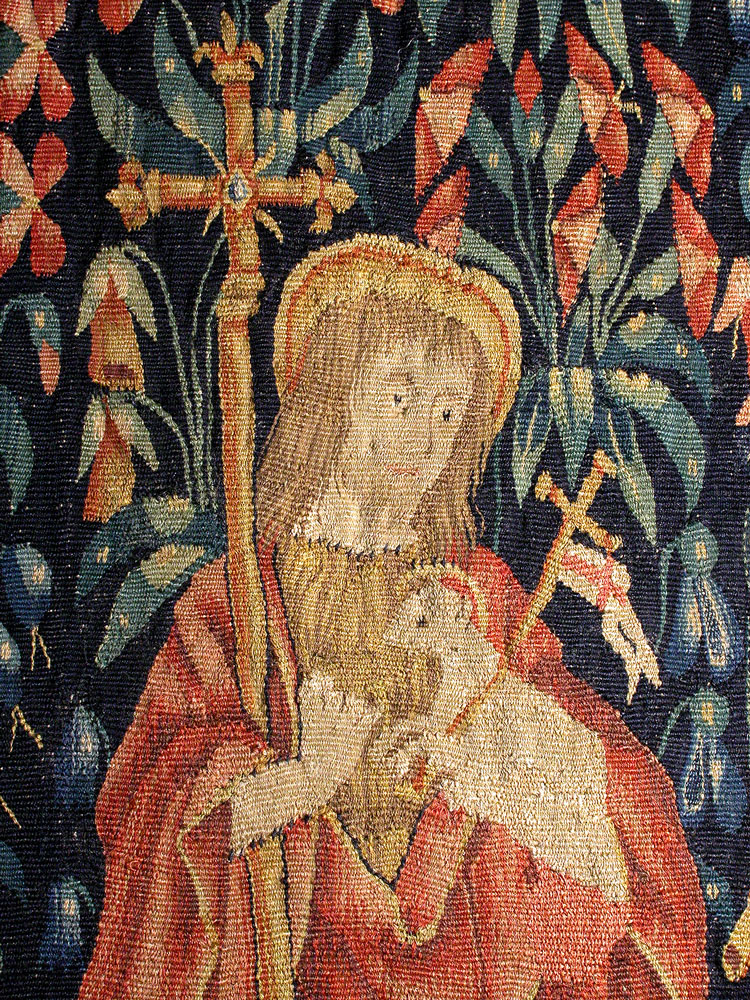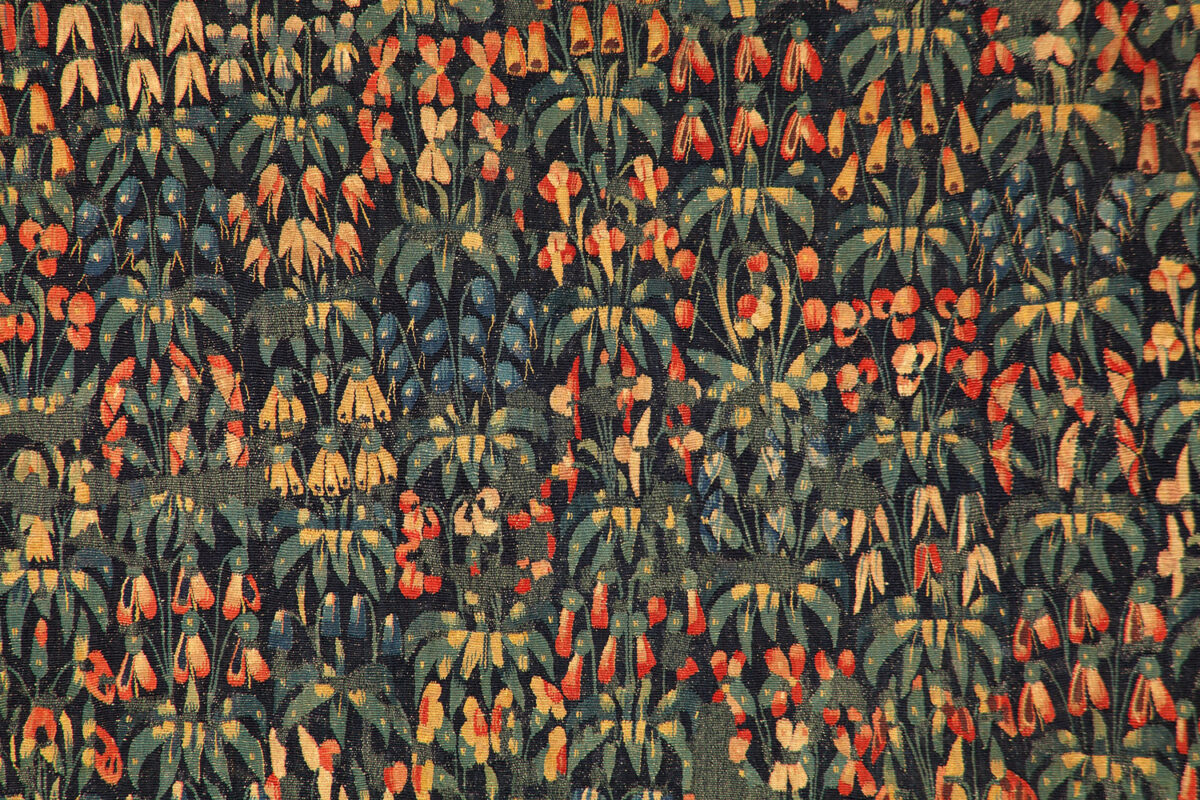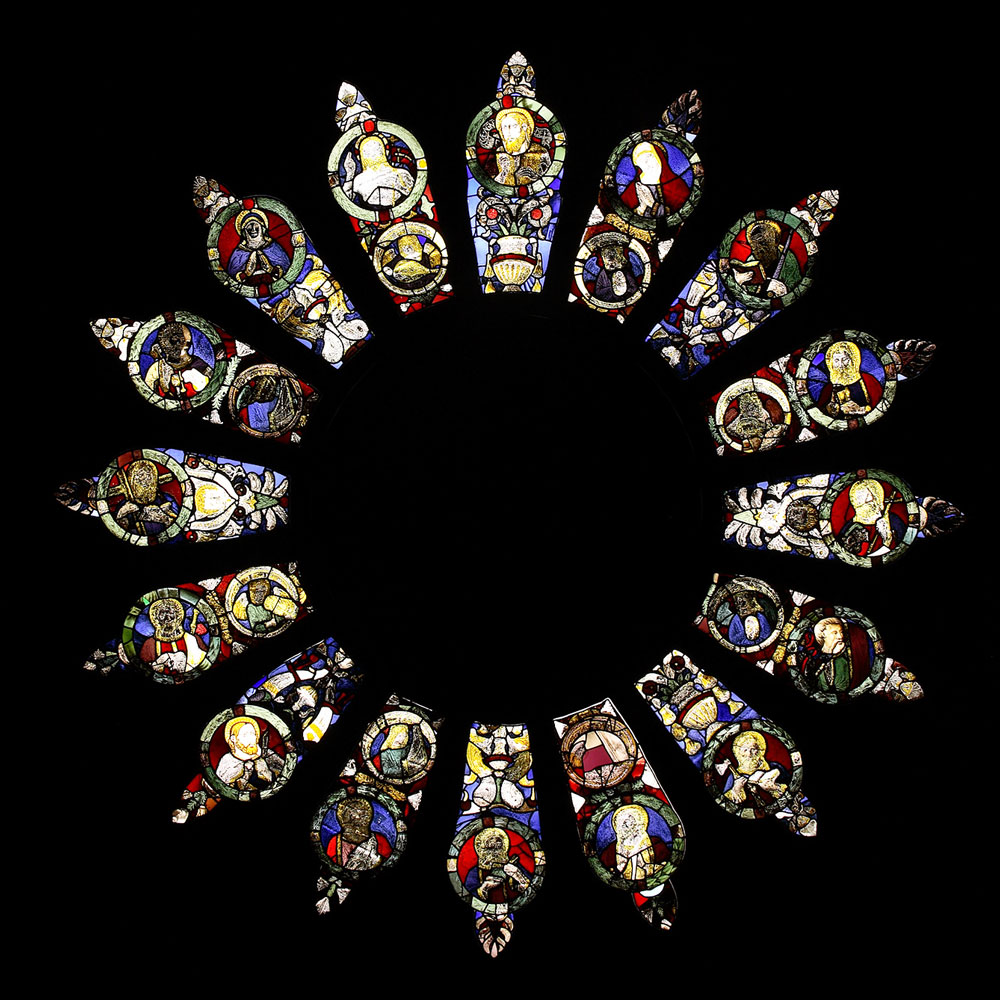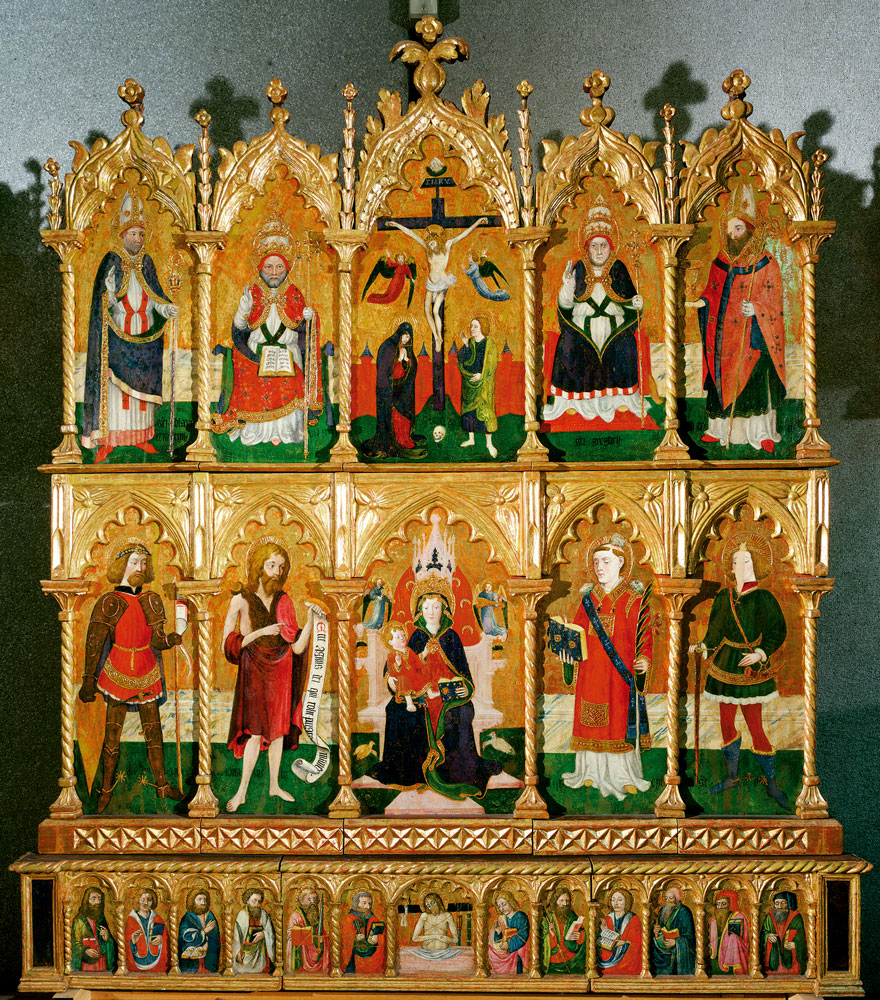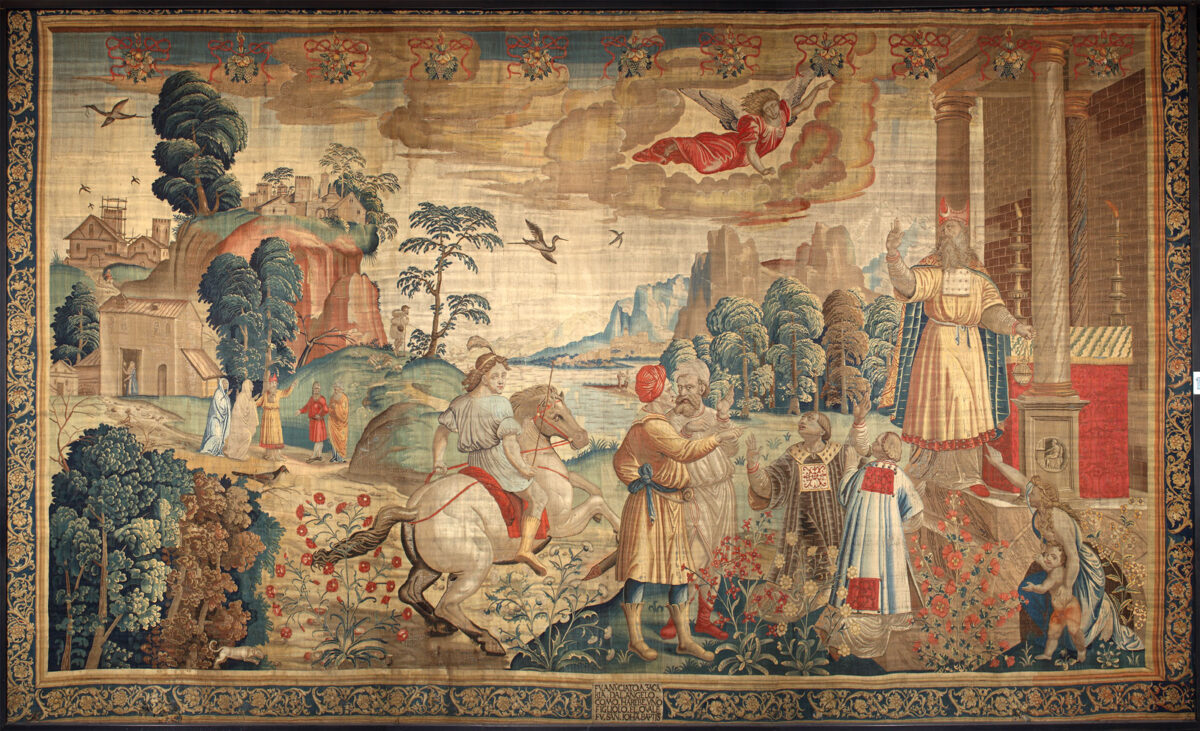The second part of the tour is dedicated to the period of the Sforza rule, which spans from 1450, the year of Francesco Sforza’s election as Duke of Milan, to 1535, when, with the extinction of his direct lineage, the state passed under the control of the Spanish monarchy.
Testimonies from this era include a splendid late-Gothic polyptych created around 1450, possibly destined for the Chapel of Theodolinda, and some Renaissance-style panels related to two altarpieces for the side chapels of the basilica, painted in 1478-80 by the Milanese artist Stefano de’ Fedeli. He was also the creator of the preparatory sketches for the rose window of the facade, which was installed at the end of the 15th century and is now placed in the center of the museum, on a wall about 12 meters high, specifically designed to house it.
From the early decades of the 16th century, two Lombard-made lectern cover tapestries depicting Saint John the Baptist, as well as three rare Flemish Millefleurs tapestries, are displayed in the lower hall.
Contemporary are the polychrome wooden statues related to a Crucifixion, placed at the exit of the room, next to another panel of the organ depicting Saint John in Limbo, which shares an attribution to the De Donati workshop with the statues.
From the second half of the century are the magnificent tapestries dedicated to the Stories of Saint John the Baptist, which were annually displayed in the cathedral on the feast day of the saint (June 24th).
They were created based on a design by Giuseppe Arcimboldi, who, along with Giuseppe Meda, was also the author of the fresco featuring the Tree of Jesse on the southern transept’s gable (circa 1556-1562).
In the Sforza era, there were numerous churches scattered throughout the city: some of ancient origin, others more recent, many of which have been largely destroyed, but are documented in the museum through paintings and sculptures, including a beautiful terracotta polyptych from around 1540-1460, originally from the Church of San Pietro Martire.
